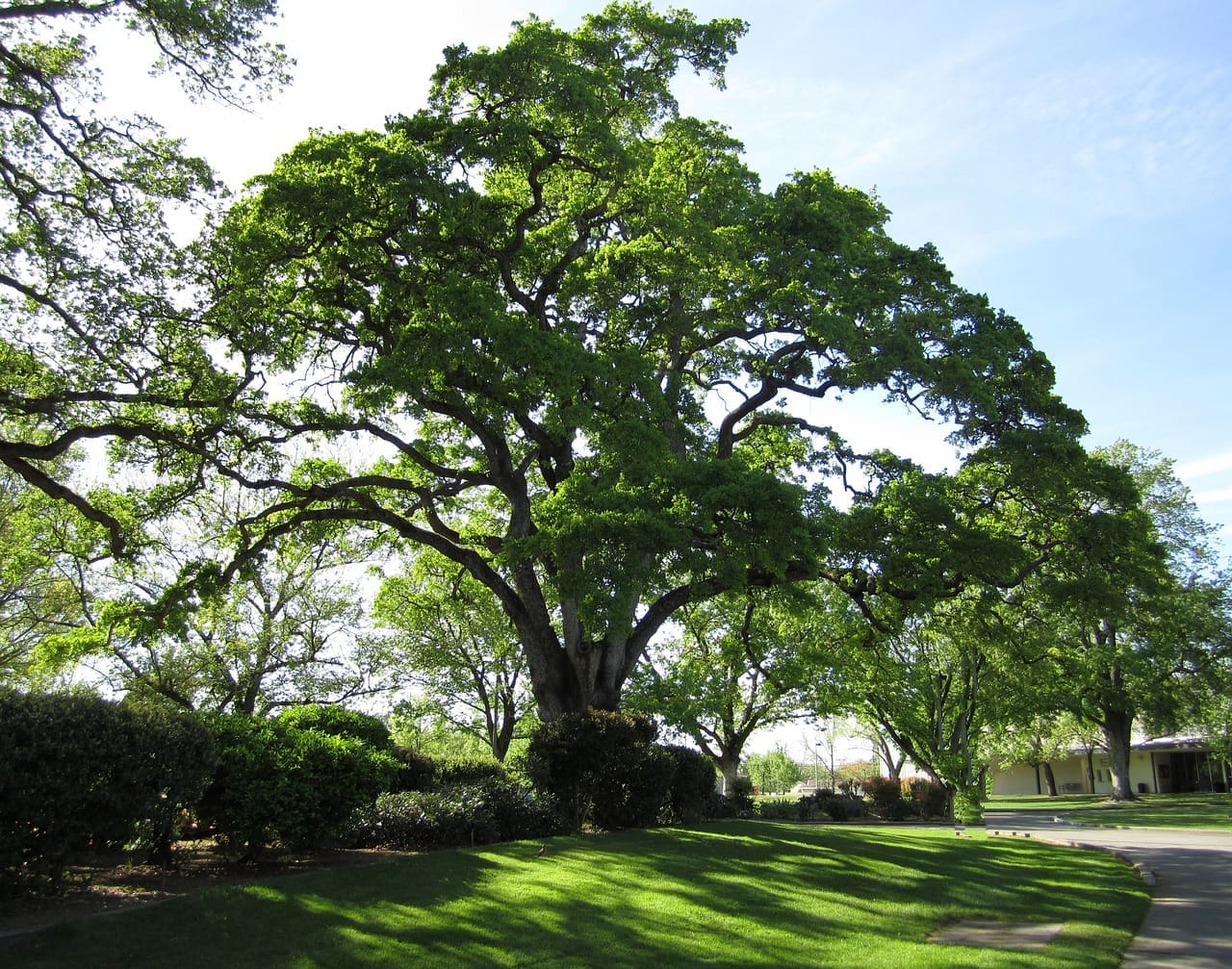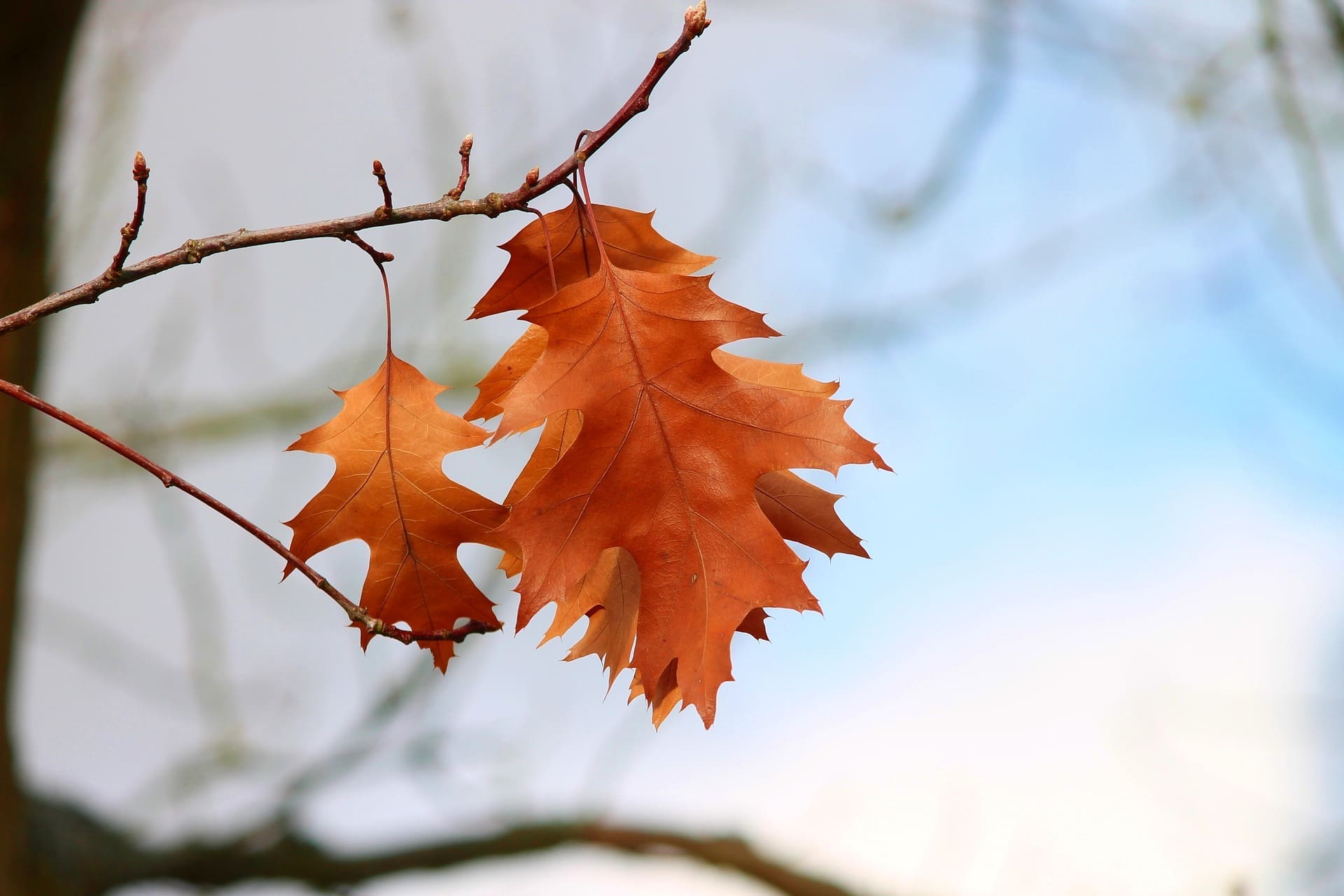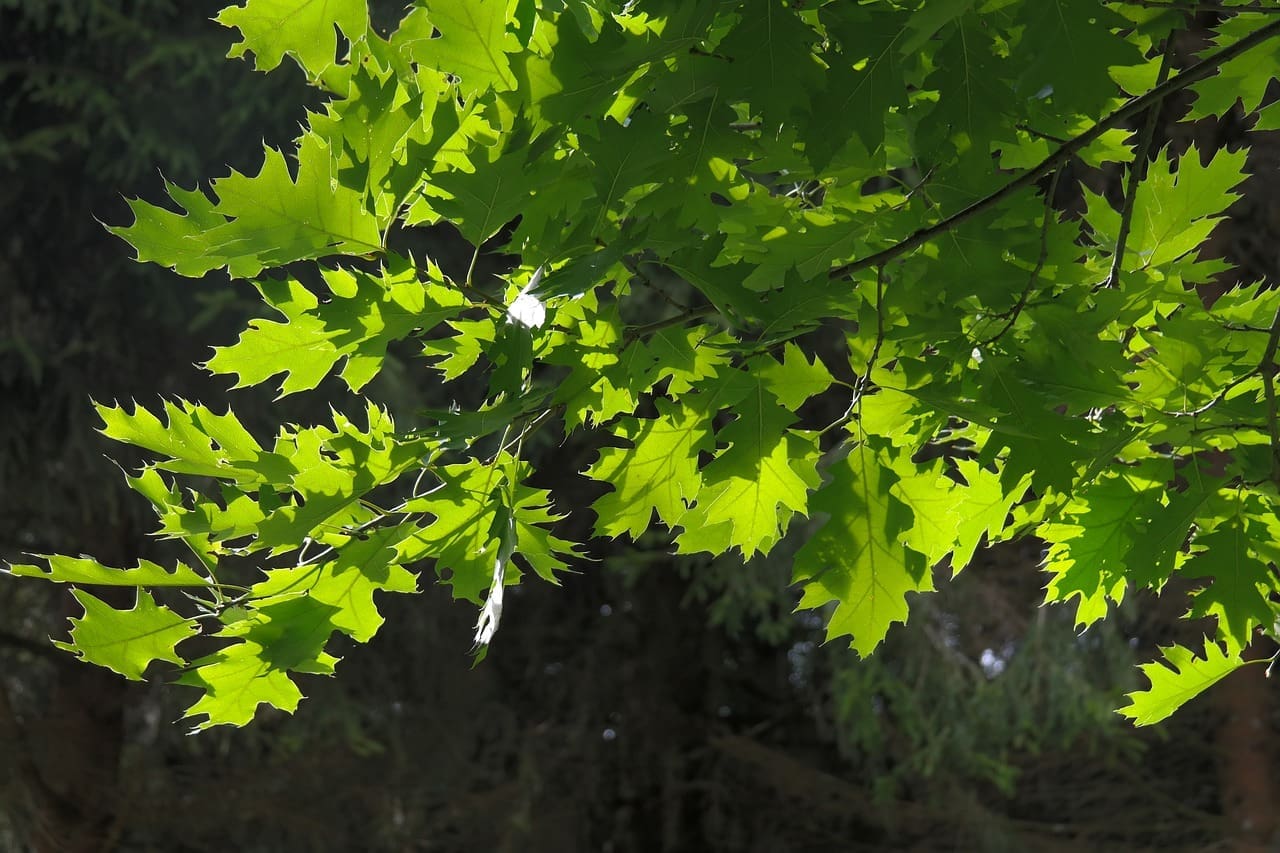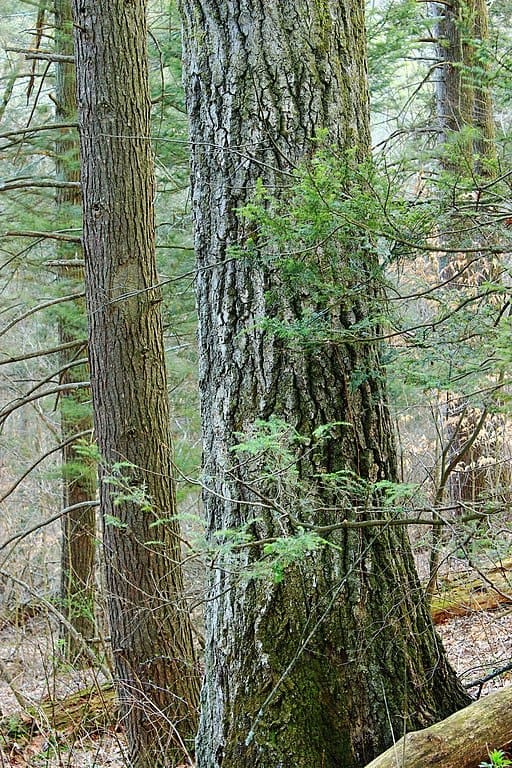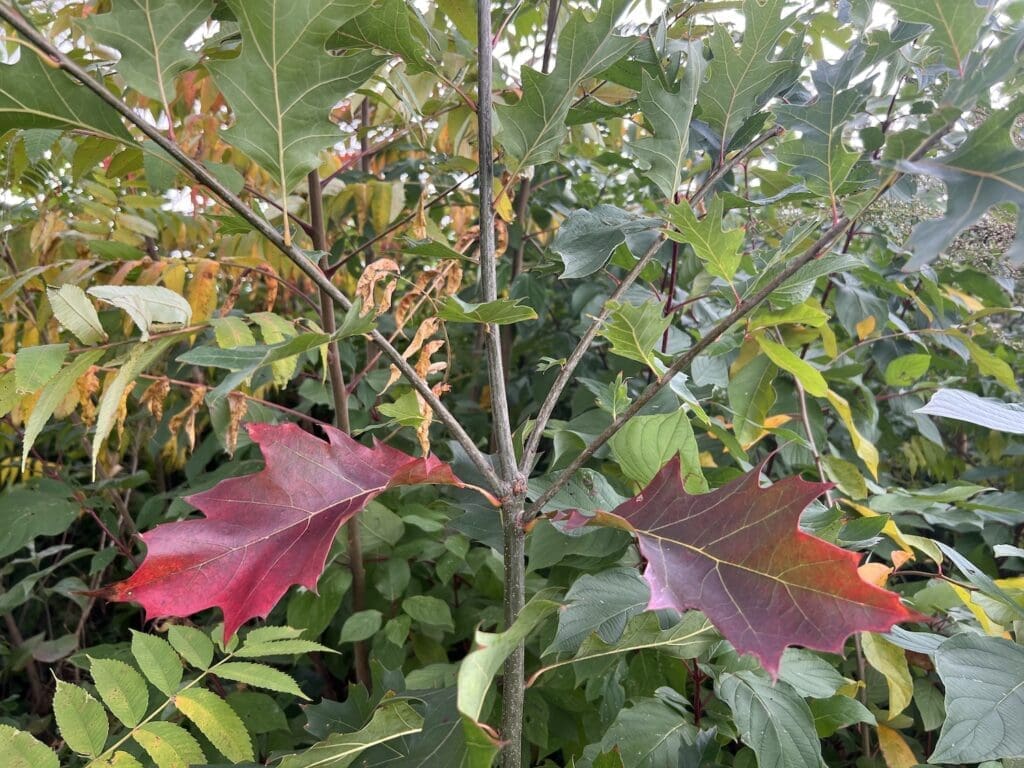What species is the tallest tree in the world, produces fog, and provides habitat for many organisms?

Let me introduce you to this ecosystem, beginning with a moment of meeting.
The metal boardwalk presses into my back, creating small indentations along my spine. A few meters away, a stream whispers, with the sound of swirling eddies lingering in my ears as the water glides and splashes. The surrounding ecosystem dazzles with green as the ferns dance from the nudge of a passing breeze. There is a deep silence in this forest. A silence that penetrates your soul, a true peace that quiets every internal murmur. Your attention drifts away from both the mundane and real challenges of the world, and shifts to look one way – up.
Now, let’s go for a walk to see the tallest trees in the world.

We step foot into the forest, with gigantic trees limiting our vision of the sky above. Today we’ll be meandering through the forest, stopping to explore and learn more about the vitality of the coast redwoods and the critical roles they play in this environment. But what does a redwood look like? The tallest known coast redwood is 379 feet (115 m) tall, which is similar to about 38 regulation height NBA hoops stacked on top of each other. This tree has a diameter of up to 26 ft (8 m) which is the equivalent to the length of about one stretch limousine. Recent research has found that there is more carbon stored aboveground in old-growth redwood networks than any other forest system.
Where did these enormous trees, towering above our heads, come from?
There are three species of redwoods found around the world, with each organism populating different biomes: Coast Redwood (Sequoia sempervirens), Dawn Redwood (Metasequoia glyptostroboides), and Giant Sequoia (Sequoidendron giganteum). The redwoods originated from conifers that grew alongside dinosaurs in the Jurassic period, about 145 million years ago. With shifts in the climate, the redwoods became constrained to their present geographic regions. Today the Dawn Redwood is found in central China and the Giant Sequoia thrives in the rugged terrain of the Sierra Nevada Mountains in California. The Coast Redwood is distributed along the coast of southern Oregon and northern California, and stands as the tallest known tree species on the planet.

We are walking down a gentle dirt path, deep within a redwood forest along the California coast, with our necks craned upwards to the giants above. As we wander amongst the trees, some over 2,000 years old, the branches above our heads are draped with lush greenery. Ferns, saplings, lichens and mosses rest within the tree; not causing harm, rather living peacefully from a higher viewpoint. These plants reposed in the canopy of the coast redwood are referred to as epiphytes. The quiet flutter of other biota sounds from above, such as the endangered Marbled Murrelets chirping from a nest and Wandering salamanders leaping between branches. The rumbling of a stream nearby is a reminder that while we cannot see below our feet, the redwoods are also building relationships below. Coast redwoods shade these aquatic environments and reduce erosion, which cools these areas for salmon populations. In exchange, the salmon provide marine nutrients to the ecosystem and the coast redwoods as they reproduce and decay.
Fog weaves through the afternoon sunlight, making our vision of the path ahead hazy. We pause, with one of the redwoods extending far below our feet, roots entangled with a neighbor, and many meters above our heads, branches draped. This redwood does not only provide habitats for a wide range of organisms, but also facilitates the local climate to support them. Redwoods play a central role in the water cycle of this coastal ecosystem, particularly through their relationship with fog. Coast redwoods require increased moisture levels to reach such extraordinary heights, and use a chemical called terpene to remove moisture from the air. This chemical causes these water droplets to condense, which creates low-lying clouds. This cycle of fog production, fueled by the nearby ocean, sustains the growth of redwood forests.

The fog slowly lifts and we continue our walk on the dirt path. The forest rustles as we reach a fallen redwood, obscuring part of our trail. The giant lies on its side, resting, with an immense root system exposed. There are ferns and mosses that have grown from the tree and a banana slug inches across the surface, leaving a slimy trail on the rough bark. Fallen redwoods give back to the community in many ways. The Yurok people have cultural traditions that involve working with fallen redwoods to create canoes and other structures. David Eric Stevens, a Yurok Canoe Builder, tells us the story of how the redwood canoe originated. “There’s a story of a redwood tree that wanted to live among humans, and the creator gave him the opportunity to live among humans by giving us canoes.” The canoes carved from fallen redwoods can take approximately seven years to create. Canoe Captain Julian Markussen describes, “If you take care of them properly, they can last for over 100 years.” These fallen redwoods continue to live even after falling, whether that be as habitat for organisms or in an extended life as canoes.
We step past the fallen redwood to continue our meander, dodging the ferns sprouting from the decaying bark. But as we walk, something changes in the forest. The redwoods seem to reach further and expand wider. The vegetation is more vibrant and green than anywhere else in the forest. The sunlight trickles through the branches above, dancing between lichen-covered branches. This is an old-growth redwood forest. Old-growth forests are hubs of biodiversity, with these trees acting as central to underground communication networks, providing habitat, and facilitating an interconnected ecosystem. The few trees that surround us are some that have been protected from historical logging in the region, as only 5 percent of these ancient coast redwood forests remain. We pause here and take a step back in time. There are hundreds of years of history captured in the lush undergrowth and full canopy.


We have reached the end of the path, emerging from the cool shade. We turn to look back, marveling once more at the incredible organisms we had the opportunity to meet. Coast redwoods regulate this vibrant, green ecosystem, endless beyond our sight. It is time to leave this magical forest, with the magnificent, ancient giants that shoot up out of our eyes’ reach. We have peered into an interconnected world, where these trees interact with the atmosphere, flourishing plant life, and abundant critters. There is a pause before we turn to go. What does this forest teach us?
I think back to that moment of meeting, lying on the boardwalk looking up. My first encounter with the coastal redwoods was magical, to say the least. There are no words to describe the might of these ancient beings, as their uppermost branches, or crown, beckon you to look up. In the sharing of gentle silence, as I laid down on the boardwalk surrounded by an ecosystem teeming with life, I dared my eyes to look farther and memorize every detail. I felt a deep desire to cherish and protect these organisms, and to share my joy for the incredible ways they shape their ecosystems and our planet. Most of all, the redwoods revived a deep sense of wonder. This wonder, inspired by such magnificent organisms, pulls you to be present. Just by nature of being and interacting with the redwoods, these trees inspire care, generosity, and resilience. How lucky we are to walk amongst such powerful beings.

Adrianna Drindak is a rising senior at Dartmouth College studying Environmental Earth Sciences and Environmental Studies. Prior to interning at Bio4Climate, she worked as a field technician studying ovenbirds at Hubbard Brook Experimental Forest and as a laboratory technician in an ecology lab. Adrianna is currently an undergraduate researcher in the Quaternary Geology Lab at Dartmouth, with a specific focus on documenting climate history and past glaciations in the northeast region of the United States. This summer, Adrianna is looking forward to applying her science background to an outreach role, and is excited to brainstorm ways to make science more accessible. In her free time, Adrianna enjoys reading, baking gluten free treats, hiking, and backpacking.


